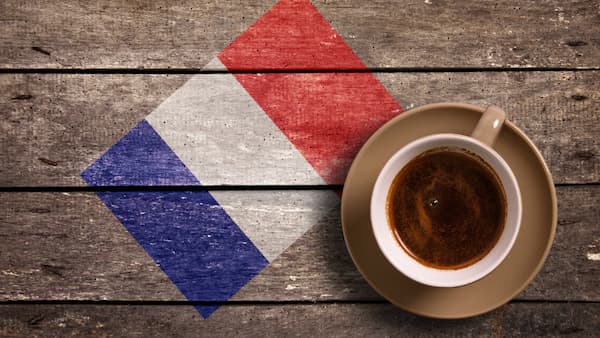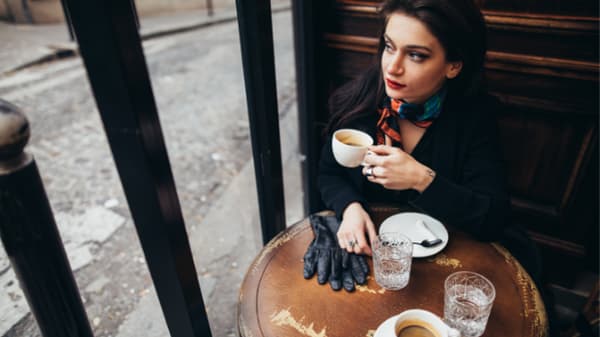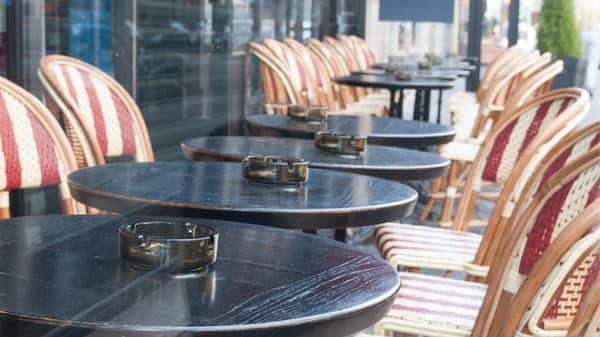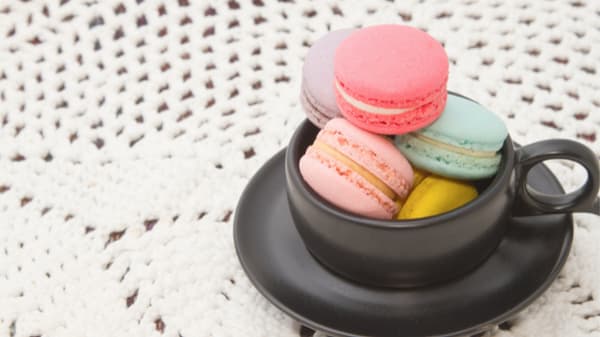French Coffee Drinks & History
Alongside baguettes, bicycles, and protests, one of the things that France is best known for is its cafés.
Whether in Paris or Nice, in the border towns or even the cities that used to belong to England, you can find dozens of little coffee shops, tiny café-bars, and a myriad of other locations where a cup of coffee is cheap and readily available.
But how is French coffee culture different from everywhere else? And what is the French coffee experience really like? We’ve got your answers.

What Is French Coffee?
Every culture that embraces coffee puts its own unique spins on it, and France is no different.
The term “French coffee” doesn’t refer to a particular roast for coffee beans or to a particular brewing method, but instead, french coffee refers to the culture that surrounds coffee: how, where, and when they drink it, and so on.
Coffee culture in France is unique; while some of the practices around coffee have echoes of Italian influences, they aren’t exactly the same.
While French coffee lovers embrace many different tools for producing one of the country’s favorite beverages, they put them to use in ways that are distinct.
Then, too, there’s the fact that the settings for drinking coffee and the social context are uniquely French.
Where Italians would consider it wrong to drink a cappuccino any time after lunch, the French are not nearly as picky about the equivalent drink.
The French drink their coffee in cafés and at home, and French coffee culture brings with it a lot of idiosyncrasies.
There are many little differences that make French coffee a distinct culture, and it’s worth delving into some myths and some background information before getting into deeper waters.
Is A French Press French In Origin?
The origin of the french press is kind of murky.
Early iterations of a coffee press using a cylinder or carafe and a piston-driven filter do come from a few French inventors.
But the modern french press, as we understand it, comes from America, patented by a Milanese immigrant named Attilio Calimani.
It’s also important to note that the french press isn’t a uniquely French way of making coffee.
It’s popular all over Europe and the UK, and in France, it’s only one of several methods for making coffee; it’s not even the most popular one.
Most French coffee drinkers tend to use espresso as the base for their caffeine hit whatever their preferred drink.
This means that the Moka pot and espresso machines tend to be more popular than the french press–known in France as a cafetière. It tends to be considered the cheap choice for students and bachelors rather than an artisanal method.

What Is French Roast Coffee?
So if the french press isn’t really French, surely french roast coffee is? But, unfortunately, that doesn’t really seem to be the case.
The term emerged in the 19th century when a lot of different products that came from or were popular more broadly across Europe just got stuck with the name “French.”
What is French roast, then?
It’s a specific level of roasting applied to coffee beans, and typically it’s the darkest roast level that producers can achieve without outright burning the beans.
The Specialty Coffee Association of America uses a special tool to measure roasted coffee beans’ color to determine the roast level.
The SCAA’s tool is called the Agtron Coffee Roast Analyzer, and it uses light to gauge the level of darkness the coffee beans have acquired, assigning a numeric score.
French roast coffees typically score between 28 and 35. The National Coffee Association also classifies this roast as the darkest level of commercial roasting.
If you suffer from heartburn as a result of drinking coffee, French, or other dark roasts may be a good option: the longer roasting results in a less acidic brew, which can mean a lower risk of heartburn after drinking.
Related Read: SCAA Certified Coffee Makers

The Most Popular Coffee In France
Generally speaking, most coffee you order in a French coffee shop will have an espresso base.
While at home, French people may put anything from a Moka pot to an American-style drip coffee brewer to an espresso machine to use for their caffeine hits, almost all cafés stick with a simple espresso machine for their coffee-making purposes.
As a result, when you put in your coffee order, you have a set of specific options–and not all of them are well-known.
French café culture has its own names for certain drinks and some drinks that are particular to France as opposed to the rest of the world. Here are some of the most popular French coffee selections.
Café
If you’re looking to drink coffee, you may be tempted to order “Un café, s’il vous plait,” zsince–after all–the word for coffee in French is just “café.”
However, if you’re expecting a cup of black coffee in return for that order, you’re going to potentially be disappointed.
“Un café” is a shot, single or double, served in small cups with a sugar cube or two. When ordering, your server may ask you if you want a“café express,” which is another term for the same thing–a classic espresso.
Many French coffee drinkers actually prefer to dunk their sugar cube into the espresso and eat it, rather than using it to sweeten the entire drink–but if you like to add your sugar to your coffee and not coffee to your sugar, no one will be offended.
Café Crème
The café crème is the French equivalent to a cappuccino, but of course, it’s a little different at the same time.
Any French person would insist that it’s a distinct drink–and admittedly, the proportions can be somewhat different.
However, at base, it’s very similar: a shot or two of espresso with a dollop of steamed milk and milk foam. It also shows up on menus under the name “café au lait.”
If you do order a café au lait, be prepared for it to have a slightly higher ratio of milk to foam, but the distinction isn’t as pronounced in France as in Italy.
Café Américain
If you want something a little closer to a black coffee experience, the café Americain is the coffee drink for you.
The café Americain is simple: light espresso and hot water. While watered-down espresso isn’t exactly the same thing, it’s about as close as you’re going to get to a black coffee at a café, where they only have an espresso maker and not a drip brewer like in American coffee shops.
Noisette
In French, the word “noisette” typically refers to hazelnut; but don’t be confused.
When you’re ordering coffee in France, a noisette doesn’t have anything flavoring or nuts in it. Instead, the name refers to the color.
The café noisette is the French coffee parallel to the Italian macchiato: a shot of espresso with a small amount of steamed milk served in small cups just like the simple café.
The process is not exactly the same; a macchiato is so named because the shot is poured in over the hot milk, marking the foam. A noisette is more blended together, giving a distinct color.
Café Serré
This coffee order is for serious, dedicated coffee lovers: the café serré is a shot of espresso made with half the water, resulting in a very concentrated coffee experience.
If you’re looking for a very quick pick-me-up, it may be just what you’re looking for.
On the other end of the spectrum is the café allongé, which is brewed with more water than standard, resulting in a more dilute coffee experience.
Café Viennois
If you’re looking for something a little more decadent, consider the café viennois for when you order coffee in France.
The café viennois is made with espresso, whipped cream, and chocolate powder. It’s a little like the Italian espresso con panna, but the café viennois is even a touch sweeter and interesting with the addition of the cocoa powder.
It’s almost like hot chocolate with whipped cream and coffee in one!
Related Read: Whipping Cream In Coffee
Café Déca
Feeling a little too buzzed from binging on French coffee?
Try ordering a café déca–which is simply decaf espresso. But, of course, you can also order any of the other coffee drinks you like with decaf; the word “déca” is simply the French version of “decaf.”
Café Gourmand
If you just have to have something sweet with your coffee, make sure to order a café gourmand.
While most cafés in France will offer a little something to nibble on (such as one or two cookies or a piece of chocolate), no matter what coffee you order, the café gourmand takes things to the next level.
Your café gourmand will come with a serving of different pastries or dessert items, such as macarons, petit fours, or more complicated cookies.
Usually, the café gourmand uses the simple shot of espresso–but in general, French coffee shops are understanding if you’d rather have an américain or a café crème with your pastries.

Coffee & Pastries Are King
Speaking of coffee and pastries: the French love to have their coffee drinks with something sweet.
Since the French enjoy their coffee drinks at all times of the day and night, they also tend to have specific pastries in mind for the different times of day they drink their coffee.
In the morning, breakfast is typically as simple as “tartines,” which is toasted bread with jam or butter or honey, a hunk of baguette with the same condiments, or a croissant.
Many French coffee lovers also love to dip their breakfast bread into their coffee–butter and all!
In the afternoon and evening, the pastry selections get more decadent, and many French eat éclairs, pieces of cake, cookies, and tarts to go along with their espresso or other coffee drinks.
Wrapping Up: How & Where The French Drink Coffee
French coffee refers to all of the whys, hows, whens, and whats of coffee in France.
While many French coffee lovers do drink their brews with milk and sugar, espresso is king; you won’t often see a “café noir” or a simple brewed coffee with skim milk or soy milk added cold.
Even for home use, milk frothers of different types are a popular home appliance.
If you ever go to France, be prepared to order coffee the way you want it, and enjoy a little bite of something sweet to go with it.

